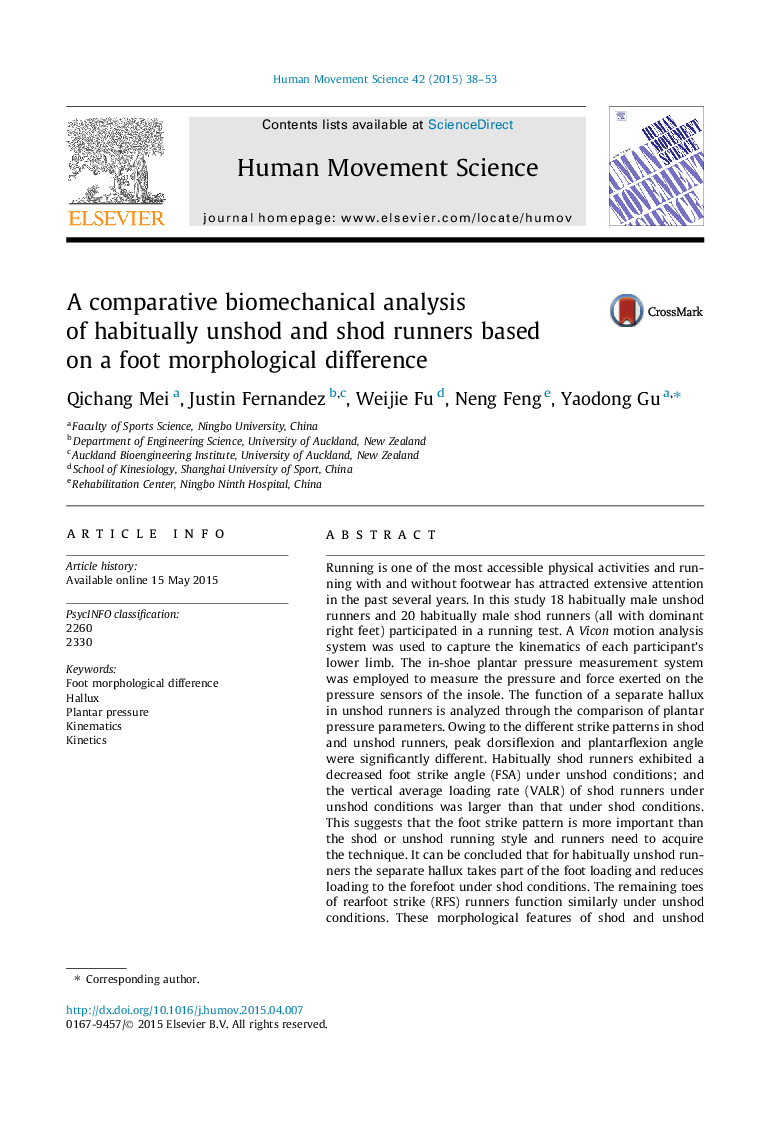| Article ID | Journal | Published Year | Pages | File Type |
|---|---|---|---|---|
| 928229 | Human Movement Science | 2015 | 16 Pages |
Running is one of the most accessible physical activities and running with and without footwear has attracted extensive attention in the past several years. In this study 18 habitually male unshod runners and 20 habitually male shod runners (all with dominant right feet) participated in a running test. A Vicon motion analysis system was used to capture the kinematics of each participant’s lower limb. The in-shoe plantar pressure measurement system was employed to measure the pressure and force exerted on the pressure sensors of the insole. The function of a separate hallux in unshod runners is analyzed through the comparison of plantar pressure parameters. Owing to the different strike patterns in shod and unshod runners, peak dorsiflexion and plantarflexion angle were significantly different. Habitually shod runners exhibited a decreased foot strike angle (FSA) under unshod conditions; and the vertical average loading rate (VALR) of shod runners under unshod conditions was larger than that under shod conditions. This suggests that the foot strike pattern is more important than the shod or unshod running style and runners need to acquire the technique. It can be concluded that for habitually unshod runners the separate hallux takes part of the foot loading and reduces loading to the forefoot under shod conditions. The remaining toes of rearfoot strike (RFS) runners function similarly under unshod conditions. These morphological features of shod and unshod runners should be considered in footwear design to improve sport performance and reduce injury.
Graphical abstractRunning is one of the most accessible physical activities and running with and without footwear has attracted extensive attention in the past several years. This study aims to identify the kinematic and kinetic differences between habitually unshod (barefoot) and shod (shoed) runners under unshod and shod conditions; and analyze the function of a separate and closed hallux angle in habitually shod feet and habitually unshod feet.The morphology-related function (separate hallux of habitually unshod runner) is distinct under unshod and shod conditions. The separate hallux shares part of foot loading and reduces the loading focused on the forefoot region during stance under shod conditions.Figure optionsDownload full-size imageDownload as PowerPoint slide
